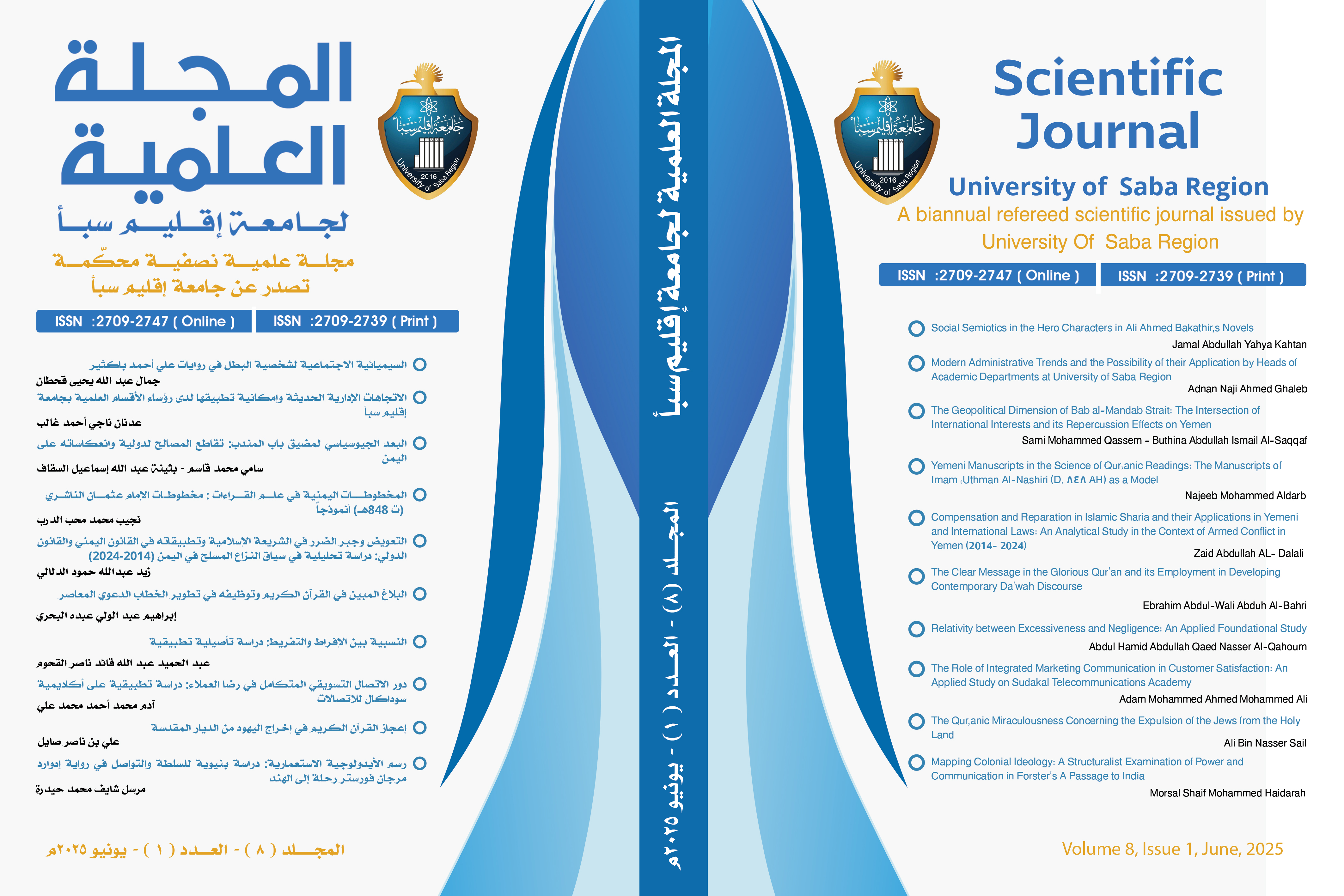Social Semiotics in the Hero Characters in Ali Ahmed Bakathir's Novels
DOI:
https://doi.org/10.54582/TSJ.2.2.118Keywords:
Ali Ahmed Bakathir, Semiotics, Social Life, Bakathir’s Novels, Smiotic ApproachAbstract
This research examines the social semiotics of the hero characters in four novels by Ali Ahmed Bakathir: The Red Revolutionary, The Handsome Warrior, The Biography of the Brave, and Oh Islam! The study employs a semiotic approach to analyze the social dimensions and symbolic connotations of the hero character in these novels, exploring how Bakathir utilized these characters to express his intellectual and social vision. The research begins with a theoretical framework that defines the concepts of social semiotics and explains the semiotic approach to analyzing literary texts, particularly focusing on character analysis. It then provides a brief overview of Ali Ahmed Bakathir’s life and literary works, highlighting his contribution to the Arabic novel and his intellectual and artistic vision. The applied study analyzes the hero character in each of the four novels, examining the historical and social context, the construction and connotations of the character, the semiotic symbols and signs, the ideological dimension, and the relationship between the hero and society or authority. The analysis reveals that Bakathir’s hero characters carry multiple social semiotic connotations that reflect the social, political, and religious conflicts in society. The comparative study between the hero characters in the four novels shows similarities and differences in their social origins, internal conflicts, relationship with authority, motivations and goals, final destinies, and religious dimensions. It also traces the development of Bakathir’s vision of the hero character across his novels, from the problematic hero in The Red Revolutionary to the epic hero in Oh Islam! The study concludes that the hero characters in Bakathir’s novels share common social dimensions, including class, familial, political, and religious dimensions, and carry common and different semiotic meanings. It also highlights Bakathir’s unique employment of the social semiotic of the hero character, which is characterized by linking the past with the present, the symbolic use of historical figures, focusing on internal conflict, connecting the individual with the collective, and the ideological employment of the characters.
Downloads
Published
How to Cite
Issue
Section
License
Copyright and Licensing
This journal publishes all scientific materials under the Creative Commons Attribution 4.0 International (CC BY 4.0) , license, which grants you the following permissions:
You are free to:
- Share — copy and redistribute the material in any medium or format for any purpose, even commercially.
- Adapt — remix, transform, and build upon the material for any purpose, even commercially.
- The licensor cannot revoke these freedoms as long as you follow the license terms.
Under the following terms:
- Attribution — You must give appropriate credit , provide a link to the license, and indicate if changes were made . You may do so in any reasonable manner, but not in any way that suggests the licensor endorses you or your use.
- No additional restrictions — You may not apply legal terms or technological measures that legally restrict others from doing anything the license permits.
Notices:
You do not have to comply with the license for elements of the material in the public domain or where your use is permitted by an applicable exception or limitation .
No warranties are given. The license may not give you all of the permissions necessary for your intended use. For example, other rights such as publicity, privacy, or moral rights may limit how you use the material.











